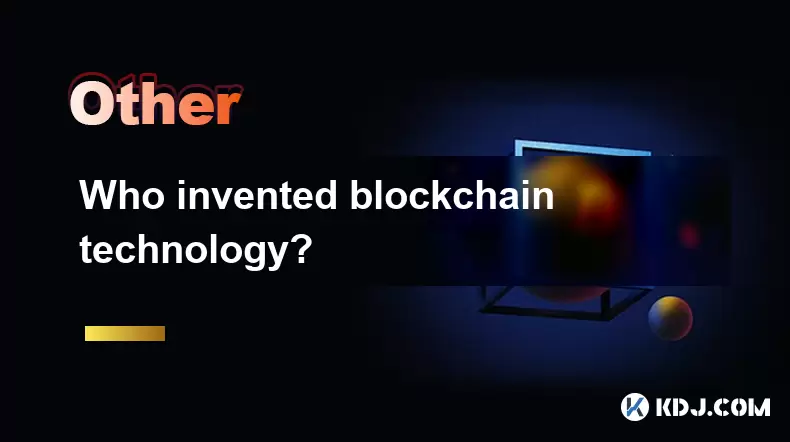-
 Bitcoin
Bitcoin $118300
-0.58% -
 Ethereum
Ethereum $3825
0.11% -
 XRP
XRP $3.137
-0.71% -
 Tether USDt
Tether USDt $0.9999
-0.01% -
 BNB
BNB $803.9
-3.37% -
 Solana
Solana $181.5
-1.94% -
 USDC
USDC $0.9999
0.01% -
 Dogecoin
Dogecoin $0.2238
-2.51% -
 TRON
TRON $0.3358
2.12% -
 Cardano
Cardano $0.7844
-2.16% -
 Hyperliquid
Hyperliquid $43.31
-1.48% -
 Sui
Sui $3.807
-4.04% -
 Stellar
Stellar $0.4203
-1.96% -
 Chainlink
Chainlink $17.79
-3.00% -
 Bitcoin Cash
Bitcoin Cash $567.8
-1.34% -
 Hedera
Hedera $0.2614
-4.30% -
 Avalanche
Avalanche $24.19
-4.46% -
 Litecoin
Litecoin $109.2
-0.74% -
 UNUS SED LEO
UNUS SED LEO $8.969
-0.01% -
 Toncoin
Toncoin $3.404
3.97% -
 Ethena USDe
Ethena USDe $1.001
-0.01% -
 Shiba Inu
Shiba Inu $0.00001307
-3.19% -
 Uniswap
Uniswap $10.33
-1.23% -
 Polkadot
Polkadot $3.884
-4.06% -
 Monero
Monero $312.9
-1.87% -
 Dai
Dai $1.000
0.01% -
 Bitget Token
Bitget Token $4.537
-2.24% -
 Pepe
Pepe $0.00001156
-3.40% -
 Cronos
Cronos $0.1437
-0.89% -
 Aave
Aave $282.8
-2.77%
Is Web3.0 just hype? The truth and outlook of the next generation of the Internet
Web3.0 aims to decentralize the internet, enhance user privacy, and distribute power more equitably, but faces challenges like scalability and user experience.
May 29, 2025 at 05:14 pm

Is Web3.0 just hype? The truth and outlook of the next generation of the Internet
The concept of Web3.0 has been generating significant buzz within the cryptocurrency community and beyond. Proponents argue that it represents the next evolution of the internet, characterized by decentralization, enhanced user privacy, and a more equitable distribution of power and resources. Critics, on the other hand, often dismiss it as mere hype, questioning the feasibility and practicality of its proposed changes. This article aims to delve into the truth behind Web3.0, examining its core principles, the technologies that underpin it, and its potential impact on the internet as we know it.
The Core Principles of Web3.0
At the heart of Web3.0 lies the principle of decentralization. Unlike the current internet, which is dominated by centralized entities such as tech giants and governments, Web3.0 envisions a digital ecosystem where control is distributed among its users. This shift is intended to empower individuals, giving them greater control over their data and online interactions.
Another key principle is enhanced user privacy. Web3.0 aims to address the pervasive issue of data exploitation by enabling users to maintain sovereignty over their personal information. Through the use of cryptographic technologies, users can interact with services and platforms without compromising their privacy.
Lastly, Web3.0 seeks to foster a more equitable distribution of power and resources. By leveraging decentralized technologies, it aims to create a more level playing field, where small creators and entrepreneurs can compete on equal footing with established players.
Technologies Driving Web3.0
Several technologies are pivotal to the realization of Web3.0. Blockchain is perhaps the most fundamental, serving as the backbone for decentralization. Blockchain enables the creation of decentralized networks where transactions and data are recorded transparently and immutably, without the need for intermediaries.
Smart contracts are another crucial component. These self-executing contracts, encoded on blockchain, automate and enforce agreements between parties, further reducing the need for centralized intermediaries. They play a vital role in enabling trustless interactions within decentralized ecosystems.
Decentralized applications (DApps) are the user-facing aspect of Web3.0. Built on blockchain, DApps offer a range of services from finance to gaming, all while adhering to the principles of decentralization and user sovereignty.
Challenges and Criticisms
Despite its promising vision, Web3.0 faces several challenges and criticisms. One major concern is scalability. Current blockchain technologies struggle to handle the volume of transactions required for a global internet, leading to slow transaction times and high fees.
User experience is another point of contention. The current state of many DApps and decentralized platforms is often cited as clunky and user-unfriendly, which could hinder widespread adoption.
Critics also argue that centralization still exists within Web3.0. For instance, the concentration of cryptocurrency ownership and the influence of major players in the blockchain space could undermine the very principles of decentralization that Web3.0 seeks to promote.
Real-World Applications and Use Cases
Web3.0 is not just a theoretical concept; it is already being implemented in various real-world applications. Decentralized finance (DeFi) is one of the most prominent examples. DeFi platforms offer financial services such as lending, borrowing, and trading without the need for traditional financial intermediaries, embodying the principles of Web3.0.
Non-fungible tokens (NFTs) represent another significant application. NFTs allow creators to tokenize digital assets, enabling them to retain control and monetize their work directly, aligning with the vision of a more equitable internet.
Decentralized social networks are also emerging, offering users greater control over their data and interactions. These platforms aim to provide an alternative to the centralized social media giants, where user data is often exploited for profit.
The Role of Cryptocurrencies in Web3.0
Cryptocurrencies are integral to the functioning of Web3.0. They serve as the native currency of many decentralized networks, facilitating transactions and incentivizing participation. Bitcoin and Ethereum are the most well-known examples, with Ethereum playing a particularly crucial role due to its support for smart contracts and DApps.
Other cryptocurrencies, such as Polkadot and Cardano, are also contributing to the development of Web3.0 by offering innovative solutions to scalability and interoperability challenges. These projects are working to create a more interconnected and efficient decentralized ecosystem.
The Impact on Traditional Internet Models
The rise of Web3.0 has the potential to disrupt traditional internet models. Centralized platforms may face increased competition from decentralized alternatives, which could lead to a shift in market dynamics. This competition could drive innovation and improvements in user privacy and data control across the board.
Content creators stand to benefit significantly from Web3.0. By enabling direct monetization and control over their work, Web3.0 could empower creators to bypass traditional intermediaries and platforms, potentially leading to a more diverse and vibrant digital content ecosystem.
Regulatory challenges are also likely to arise as Web3.0 gains traction. Governments and regulatory bodies may struggle to adapt existing frameworks to the decentralized nature of Web3.0, leading to a complex and evolving regulatory landscape.
Current State and Adoption
The adoption of Web3.0 is still in its early stages, with a significant portion of internet users remaining unfamiliar with its concepts and technologies. However, interest and investment in Web3.0 are growing, driven by the cryptocurrency community and tech enthusiasts.
Educational initiatives are playing a crucial role in increasing awareness and understanding of Web3.0. Workshops, online courses, and community-driven projects are helping to demystify the technology and its potential benefits.
Infrastructure development is another key area of focus. Projects aimed at improving the scalability and usability of decentralized technologies are essential for the widespread adoption of Web3.0. These efforts are gradually making decentralized platforms more accessible and appealing to a broader audience.
Frequently Asked Questions
Q: How does Web3.0 differ from Web2.0?
A: Web2.0 refers to the current state of the internet, characterized by centralized platforms and user-generated content. Web3.0, on the other hand, aims to decentralize the internet, enhancing user privacy and creating a more equitable distribution of power and resources. While Web2.0 relies on centralized intermediaries, Web3.0 leverages blockchain and other decentralized technologies to enable direct peer-to-peer interactions.
Q: Can Web3.0 coexist with the current internet infrastructure?
A: Yes, Web3.0 can coexist with the current internet infrastructure. Many Web3.0 applications and platforms are designed to integrate with existing systems, allowing users to transition gradually. The goal is not to replace the current internet but to offer an alternative that addresses its shortcomings.
Q: What are the main barriers to the widespread adoption of Web3.0?
A: The main barriers to the widespread adoption of Web3.0 include scalability issues, user experience challenges, and regulatory uncertainties. Current blockchain technologies struggle to handle the volume of transactions required for a global internet, and many decentralized platforms are seen as clunky and user-unfriendly. Additionally, the decentralized nature of Web3.0 poses challenges for existing regulatory frameworks.
Q: How can individuals get involved with Web3.0?
A: Individuals can get involved with Web3.0 by exploring decentralized applications, participating in cryptocurrency and blockchain projects, and staying informed about developments in the space. Educational resources, such as online courses and community workshops, can help individuals understand and engage with Web3.0 technologies. Additionally, investing in cryptocurrencies and supporting Web3.0 initiatives can contribute to the growth and adoption of this next-generation internet.
Disclaimer:info@kdj.com
The information provided is not trading advice. kdj.com does not assume any responsibility for any investments made based on the information provided in this article. Cryptocurrencies are highly volatile and it is highly recommended that you invest with caution after thorough research!
If you believe that the content used on this website infringes your copyright, please contact us immediately (info@kdj.com) and we will delete it promptly.
- PENGU Price Plunge? Binance Transfers and Token Transfer Trends
- 2025-07-30 23:10:15
- Navigating Crypto Investment: Bitcoin Mining and the Rise of Cloud Mining in the Big Apple
- 2025-07-30 22:31:15
- Meme Coins, Profit, and Investment: Riding the Crypto Wave in Style
- 2025-07-30 23:10:15
- LivLive's Gamified AR Launch Phase: Level Up Your Reality!
- 2025-07-30 22:31:15
- Bitcoin, Crypto, and the Golden Age: Navigating the Future of Digital Assets
- 2025-07-31 00:10:14
- JPMorgan, Coinbase, and Crypto Access: A New Era for Digital Finance?
- 2025-07-30 22:50:13
Related knowledge

How to start a business using blockchain?
Jul 28,2025 at 12:36am
Understanding the Basics of Blockchain TechnologyBefore diving into the process of starting a business using blockchain, it's crucial to understand wh...

What is a token on the blockchain?
Jul 21,2025 at 07:00am
Understanding the Concept of a TokenIn the realm of blockchain technology, a token is a digital representation of an asset or utility that exists on a...

Can blockchain be used for identity verification?
Jul 18,2025 at 02:14pm
Understanding Identity Verification in the Digital AgeIn the modern digital landscape, identity verification has become a critical component for ensur...

What is a consensus mechanism in blockchain?
Jul 21,2025 at 03:01am
Understanding the Basics of Consensus MechanismsA consensus mechanism is a critical component of any blockchain network. It refers to the process by w...

How to explain blockchain to someone with no tech background?
Jul 18,2025 at 11:08pm
Understanding the Basics of BlockchainTo explain blockchain to someone with no tech background, it's essential to start with simple analogies and avoi...

Who invented blockchain technology?
Jul 23,2025 at 01:28am
Origins of Blockchain TechnologyBlockchain technology did not emerge from a single inventor or institution. Instead, it evolved through a series of ac...

How to start a business using blockchain?
Jul 28,2025 at 12:36am
Understanding the Basics of Blockchain TechnologyBefore diving into the process of starting a business using blockchain, it's crucial to understand wh...

What is a token on the blockchain?
Jul 21,2025 at 07:00am
Understanding the Concept of a TokenIn the realm of blockchain technology, a token is a digital representation of an asset or utility that exists on a...

Can blockchain be used for identity verification?
Jul 18,2025 at 02:14pm
Understanding Identity Verification in the Digital AgeIn the modern digital landscape, identity verification has become a critical component for ensur...

What is a consensus mechanism in blockchain?
Jul 21,2025 at 03:01am
Understanding the Basics of Consensus MechanismsA consensus mechanism is a critical component of any blockchain network. It refers to the process by w...

How to explain blockchain to someone with no tech background?
Jul 18,2025 at 11:08pm
Understanding the Basics of BlockchainTo explain blockchain to someone with no tech background, it's essential to start with simple analogies and avoi...

Who invented blockchain technology?
Jul 23,2025 at 01:28am
Origins of Blockchain TechnologyBlockchain technology did not emerge from a single inventor or institution. Instead, it evolved through a series of ac...
See all articles

























































































